
How to build your dog’s confidence in public

Philippa Short
24 March 2022 | 8 minutes read
Are you a new pet parent who couldn’t socialise their puppy fully during lockdown? Recently brought a rescue dog into the family? Or perhaps you just have a pup who’s nervous being in the big wide world. There’s lots of reasons why your pup may not be the most confident canine when out and about.
Dog behaviourist and training expert Philippa Short is here to help. Philippa talks about building your dog’s confidence in public places, including making sure you’re doing it in your pup’s best interest.
- When is a dog ready to go out in public?
- How to set up any dog for success in public
> How to build your dog’s confidence in shops, pubs, and restaurants - How to set up a nervous/non-socialised dog for success in public
- How to train your dog to be calm in public
> How to teach your dog to settle down - How can you tell if a place is dog-friendly?
- Other things to know about taking your dog out in public
> Should I use public dog parking stations?
> Does my dog need ID when we go out in public?
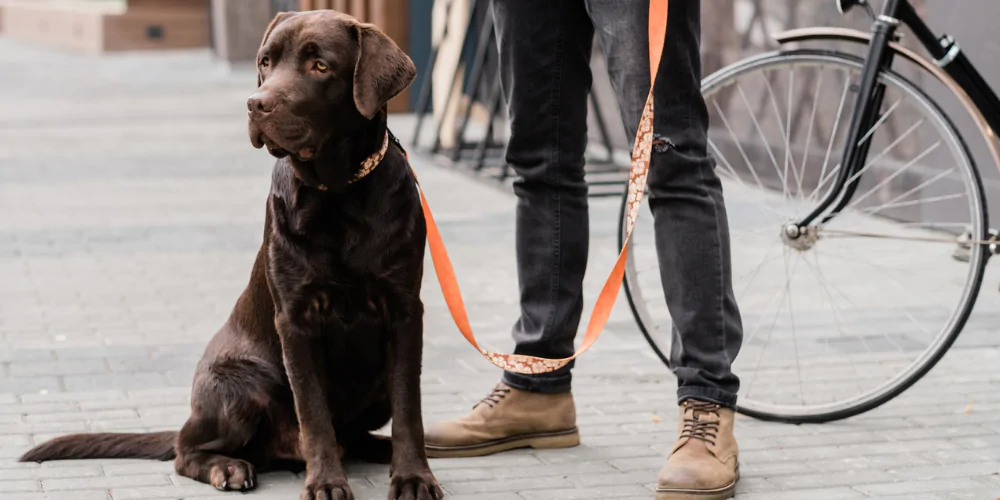
When is a dog ready to go out in public?
To know when your dog is ready to try going out in public, first think about your goals for taking them out. Is it for you or your dog’s socialising needs?
Some dogs love being social, walking around busy streets and heading into pubs and cafes. For other pups, this wouldn’t be top on their list of fun activities. Then there’s the in-between dogs, who might like to go out in busy public areas but haven’t really had the chance. This is where you’ll want to gently expose them and see if they enjoy it.
It’s about balance, so knowing when your dog is ready depends on their:
- Age – puppies and older dogs will tire faster.
- Personality – some are partygoers, others are wallflowers.
- Socialisation history – you might have a rescue and not know their background.
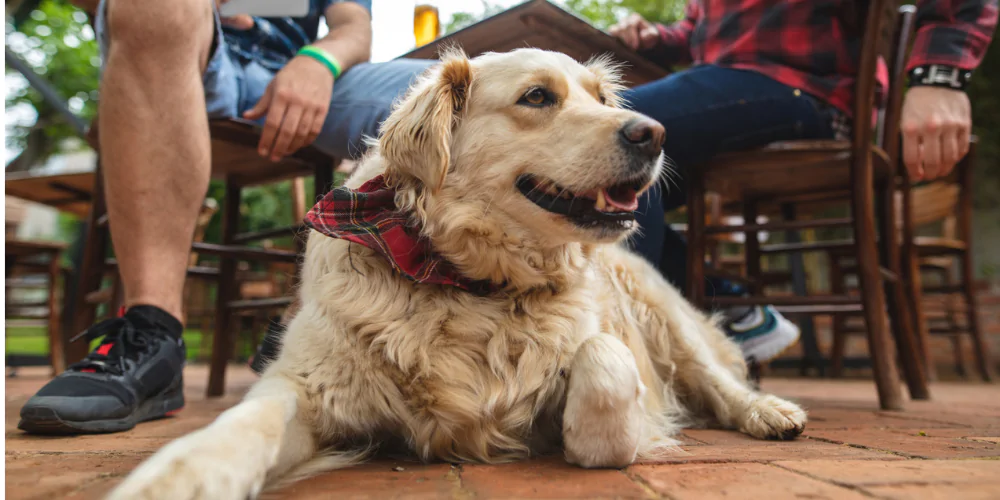
How to set up any dog for success in public
Setting any dog up for success in public places is about being mindful and making sure their needs are being met.
For example, what day of the week and time of day is it? Are you going somewhere that’s often busy? Going somewhere overstimulating too quickly could make your pooch hyperactive and mentally exhausted.
Here’s a few ways you can help to meet your dog’s needs in public:
- Take them for a walk (or at least let them stretch their legs and go to the toilet). Going into a highly charged social situation while in physical discomfort could make them emotionally uncomfortable. It could also add pressure when trying to communicate with you.
- Carry a pop up/plastic bowl and a bottle of water with you, to help keep them hydrated during the day. You might not have access to a tap so it’s important to be prepared.
Bring a comfy and portable cushion from home they can lie on (if they’re a short-haired breed or don’t like cold/rough floors). The familiar smell of home may also soothe and calm your pooch. - Bring a chew or stuffed toy to keep them occupied – as long as they don’t have a resource guarding instinct. This is often a good idea for puppies who need a way to settle down.
- If you have a nervous or rescue dog with guarding instincts, swap out the toy for some high-value treats. Instead of leaving these on the ground (where your dog could be protective), hand feed them as needed.
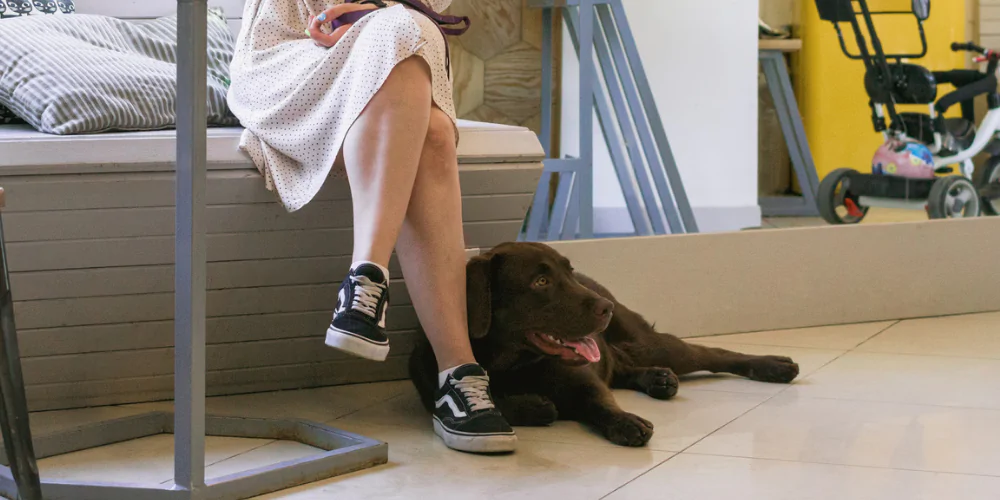
> How to build your dog’s confidence in shops, pubs, and restaurants
Start building your dog’s confidence with outdoor venues first. Weather permitting, of course (you try getting a Dachshund out in the slightest bit of drizzle). Outdoor public places are less threatening and there are easier exits to get your dog out if needed.
To build your dog’s confidence in shops and markets, think about:
- How much space they have – lots of stalls with narrow aisles doesn’t leave much room for your dog to move. Look for wider, more open-spaced shops and markets.
- How many people will be there – if there’s high footfall, there’s a chance your dog could be knocked into or stepped on. Choose a time that’s less busy.
- How overwhelmed their senses will be – there may be a lot of people coming over to say hello, so be confident you can manage interactions.
To build your dog’s confidence in pubs and restaurants, try to:
- Sit outside and choose a table on the very outskirts of the pub or restaurant garden.
- Stay away from tables in the middle of the room, near the toilets, or in a gangway – your dog will be permanently disturbed by other diners.
- Keep away from the end of the bar as staff may be coming through the hatchway.
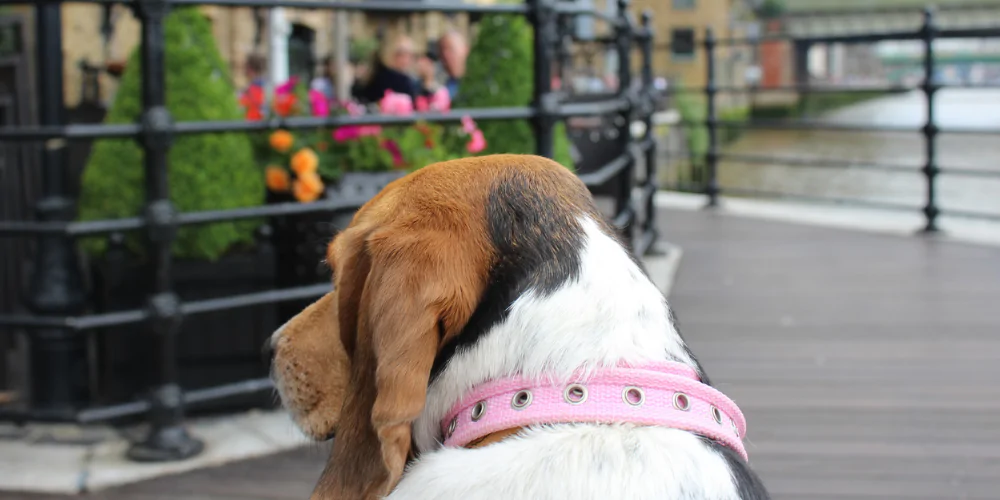
How to set up a nervous/non-socialised dog for success in public
Have a more nervous, shy, or non-socialised dog? There’s a few extra things you can do to help set them up for success in public:
- Focus on taking them out during quieter times of the day and week.
- Pick the right external spot to eat or drink – indoor seats could be even more overwhelming to a nervous pup.
- Bring them to public areas in short bursts – we’re talking 15 to 20 minutes max on the first go, even if they seem happy. You want them to leave with a good feeling and emotional response, rather than waiting till they get overwhelmed.
- If they’re showing signs of being unhappy, you can try to help settle them with treats. But if this doesn’t have an immediate effect, take them away to a quiet area or room. Let them unwind or sleep if needed somewhere free of people and noises.
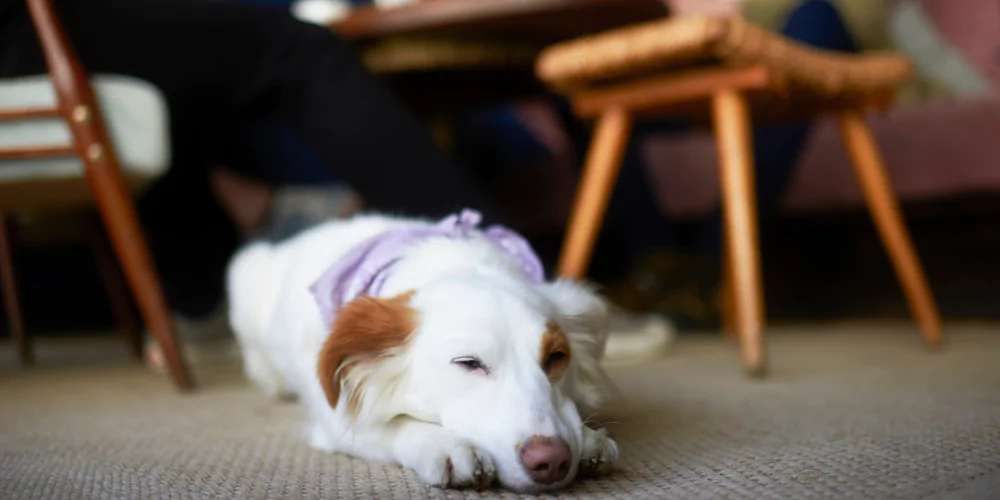
How to train your dog to be calm in public
Training your dog to be calm in public takes time and patience. You’ll want to give them the tools to be as relaxed as possible. We’re talking:
- Using high value treats to add value to the time they’re spending in public. These shouldn’t be used as a constant bribe to stay put.
- Bringing in calming remedies that they’re used to smelling at home. For example, a bandana or bed sprayed with a dog-safe and natural essential oil spray.
- Keeping a close eye on their behaviour and body language. Look out for signs that they’re tired, scared, or overwhelmed.
- Building up their time in public slowly, rather than flooding them with socialisation.
- Teaching them how to settle at home so they can put this into practice in the outside world.
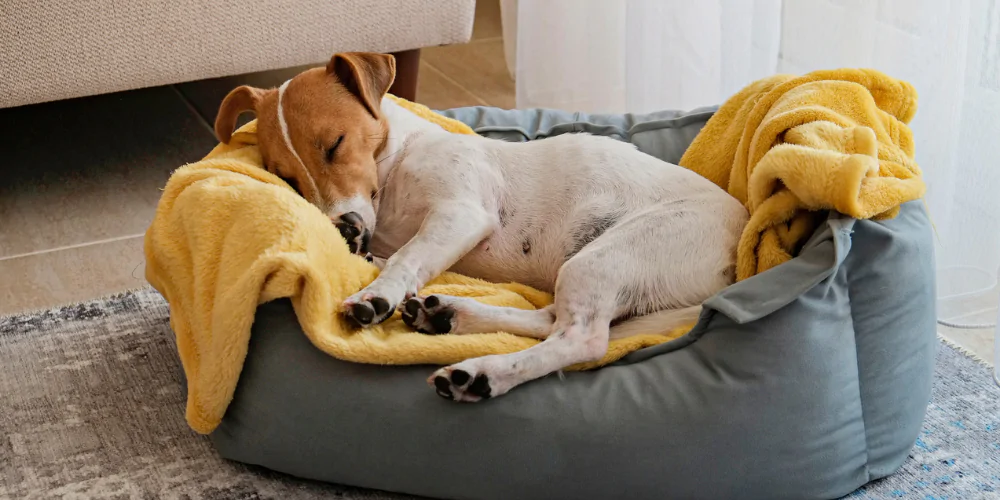
> How to teach your dog to settle down
Helping your dog to learn how to settle down can be an invaluable tool for many situations (did someone say vet visit?). You’ll need a portable bed, mat or cushion they find comfy as their ‘settle spot’ and slowly build up value.
For this example, we’ll use a cushion:
- Start by letting them wander over and look at the cushion, giving them a treat for each interaction or moment they show interest.
- Keep doing this until the cushion becomes a familiar and enticing object.
- Next, encourage them to sit and then lie down on the cushion, giving them more treats as positive reinforcement.
- Now you can move the cushion beside you when you’re sat down on the sofa. This tells your pup the cushion is a nice place to rest beside you.
Always keep in mind that certain breeds may not want to sit on a mat. Bigger, long-haired breeds can get too hot, so may prefer to lie on a cold floor, especially in warmer months.
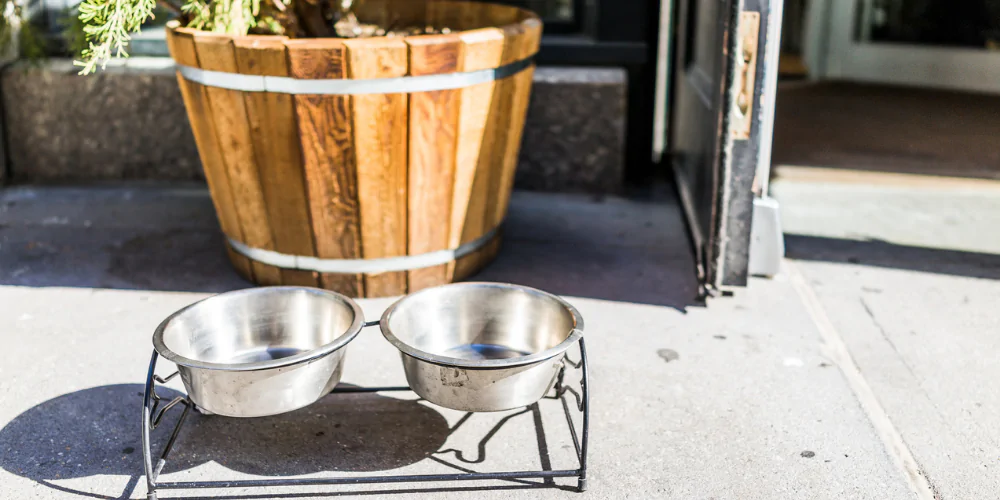
How can you tell if a place is dog-friendly?
Now that your canine is more comfortable with being out in public and is happy to be there, where do you go?
You can often tell if a place is dog-friendly because they’ll put a water bowl outside the front of their shop or restaurant. Another tell-tale is a sign outside that says ‘dogs welcome’!
Many UK stores, supermarkets, and restaurants are now allowing companion dogs (not just assistance dogs) into their buildings. You can look up different dog-friendly venues by area on the Dog Friendly website search tool.
Keep in mind that each venue will have its own rules for letting dogs in, such as:
- Keeping them on a lead at all times.
- Making sure they’re well-behaved and don’t disrupt other customers.
- Carrying them on escalators.
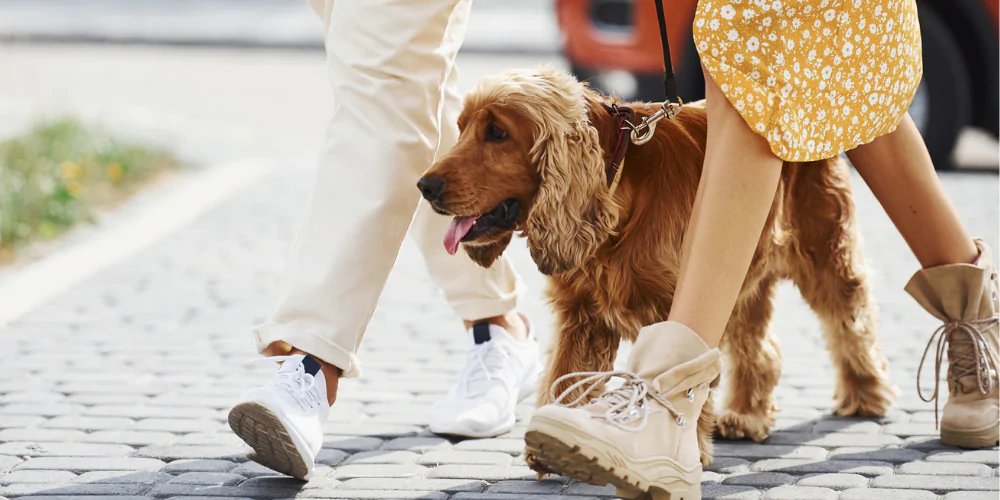
Other things to know about taking your dog out in public
> Should I use public dog parking stations?
You might have spotted some ‘dog parking’ hooks on the walls of public venues. It’s never a good idea to leave your dog unattended and tied up to one of these spots. They could be at risk of being snatched or getting defensive if someone tries to grab at them.
> Does my dog need ID when we go out in public?
If you’re going out in public with your pooch, you’ll need a well-fitting collar or harness with an ID disc. This is one of several UK dog laws and your responsibility as a pet owner. The ID tag should have their surname, address, and postcode. Adding a telephone number is completely optional.
Ready to explore the world with your pup? Don’t forget to protect them against the unexpected with Petsure dog insurance.


